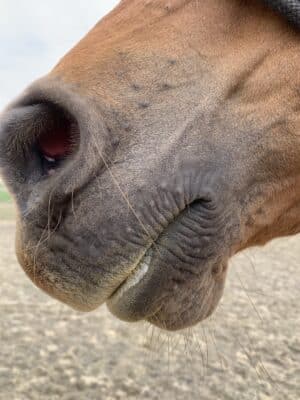Rehab, Training, Training and Management
Improving condition – it’s a balancing act…
Sophie Pickard continues her look at building your horse’s fitness
Now you’ve started to get your horse fit, ready for the competition season ahead. You can see your end goal but, it feels very far away. It’s tempting to ramp up the exercise to achieve results more quickly…. so, let’s take a look at why progressing slowly but incrementally, might actually get you to your goal faster.
Muscle mass
Muscles gain strength by enlarging their fibres, rather than by gaining additional fibres. As the fibres enlarge, the metabolic processes responsible for converting nutrients into energy, temperature regulation and removal of waste products also increase, in order to maintain the additional power. Actually, to enlarge, muscles require regular use at approximately 75% of their maximum tension for a prolonged period of time. This means muscles will not grow with consistently easy exercise nor, will they grow if they are over worked. Prolonged or excessive tension in fact, fatigues a muscle and rather than enlarge its fibres – the muscle fibres appear to shrink. This is because the metabolic processes cannot provide adequate nutrition to the muscles, causing a build-up of waste products, resulting in sore, tight and spasming muscles.
“fatigue is the enemy of well-intentioned owners aiming to increase their horse’s fitness”
So, how do we know if we’re working our horse’s muscles at the correct tension? Without actually being able to check the tension of every muscle beneath the skin during a training session, we have to use the power of observation to interpret how well our horses are responding to exercise.
Observation of the horse’s breathing, sweating and demeanour are some of the most reliable parameters we have, to measure their exercise tolerance and their response to the training.
Breathing
Monitoring your horse’s breathing is a useful marker for their level of fitness, watching their nostril flare and breathing rate, as well as listening for snorts and feeling their rib cage expand as they breathe. Being aware of your horse’s breathing is a useful evaluation tool in the conditioning process and, one of the best ways to avoid fatigue. Breathing is such a natural thing, something that just happens, and we don’t usually need to pay attention to it. At rest this might be the case but during exercise, the body’s demand for oxygen increases and horses, just like humans, can be prone to shallow or inefficient breathing.
In order to gain fitness and improve exercise tolerance, the horse must be able to relax and breathe efficiently to ensure that their muscles are oxygenated fully. Without efficient breathing, stride length can be limited and the horse’s muscles may remain tight and restricted. But, how as riders/trainers can we assess the horse’s breathing as a marker of their fitness or exercise tolerance?

Monitoring how frequently your horse snorts to clear their nose can indicate that they are breathing more fully and deeply during exercise, and snorting earlier into the exercise session and more frequently can be signs of relaxation and improved exercise tolerance. If your horse sighs once he is halted and reins are lengthened that is another sign he is breathing more effectively.
During riding can you feel the outwards movement of his ribcage between your legs? If so, this is another good sign that he is inhaling and exhaling deeply and, is able to oxygenate his muscles adequately. Some horses can be heard to grunt or heave during the first few strides of canter – this is usually a sign that they have been holding their breath. It is important to return to trot if this is the case then transition again to canter when they appear to be more physically relaxed.
Get the timing right
During a riding session, it is imperative to moderate the duration of each specific exercise you perform – as mentioned in the previous article, fatigue is the enemy of well-intentioned owners aiming to increase their horse’s fitness.Performing an exercise for too long can be damaging and detrimental to muscle and surrounding tissue.
Exercises are most beneficial when performed for a maximum of 3 minutes at a time, allowing the horse to move in a different way for a brief period of time before returning to perform another set of the exercises. This allows their tissues to adapt to the exercise, and allows their respiration rate to return to normal and ensure adequate oxygenation to the tissues. With all this in mind, these parameters can provide useful markers for when your horse is ready to proceed with the next stage of the preparation for competition to increase their fitness.
